Chronic adaptations to aerobic training - muscular
1/20
There's no tags or description
Looks like no tags are added yet.
Name | Mastery | Learn | Test | Matching | Spaced |
|---|
No study sessions yet.
21 Terms
Increased size and number of mitochondria
More and larger mitochondria increase aerobic ATP production by oxidising glycogen and triglycerides, enhancing energy supply for prolonged exercise.
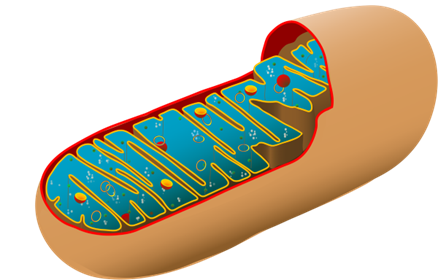
Increased myoglobin stores
Aerobic training raises myoglobin content in muscles, improving oxygen extraction and delivery to mitochondria for energy production. Myoglobin shuttles oxygen to mitochondria for aerobic ATP resynthesis.
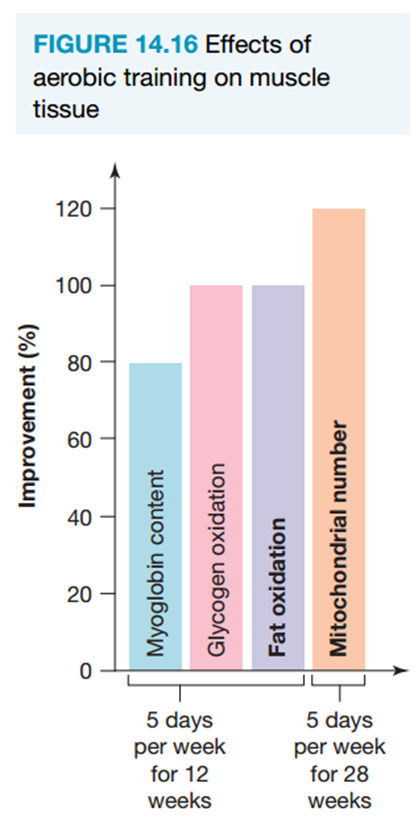
Increased muscular fuel stores and oxidative enzymes
Aerobic training increases glycogen and triglyceride storage in slow-twitch fibers and boosts oxidative enzymes, enhancing aerobic ATP production and reducing reliance on anaerobic glycolysis until higher intensities.
Increased oxidation of glucose and triglycerides
Aerobic training enhances muscle fiber capacity to oxidise glucose and triglycerides. Greater fat oxidation spares glycogen, allowing athletes to sustain higher intensities for longer, improving aerobic performance.
Increased arteriovenous oxygen difference (A-VO₂ diff)
Trained athletes extract more oxygen into muscles due to higher myoglobin and mitochondrial content.
Venous oxygen concentration decreases, increasing A-VO₂ diff during submaximal and maximal exercise, allowing greater oxygen uptake and aerobic energy production.
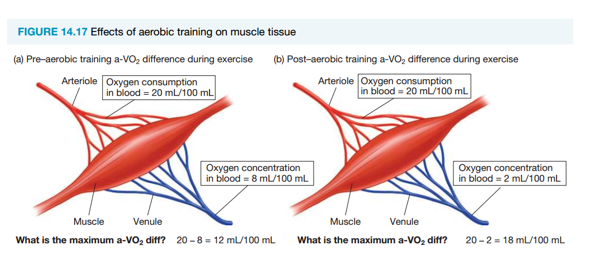
Muscle fibre adaptation from aerobic training
Fast-twitch type A fibres can adopt characteristics of slow-twitch fibres through endurance training, allowing more ATP to be generated aerobically.
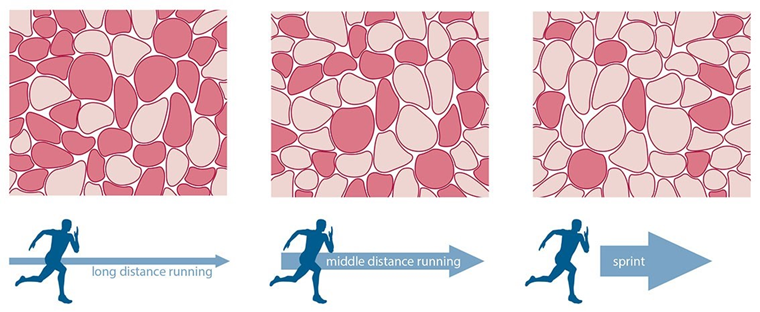
Table of characteristics of fast and slow twitch muscle fibres
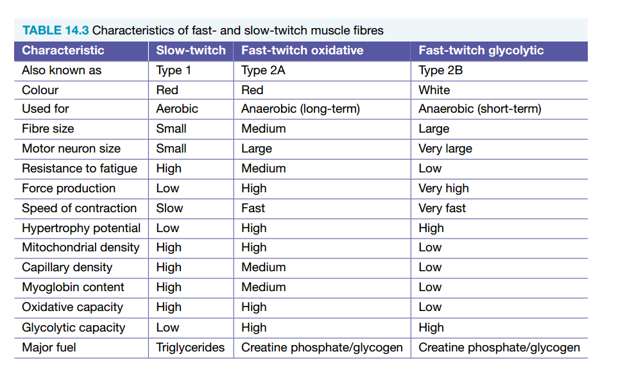
Mitochondria size and number adaptation
Increase
Myoglobin content/stores adaptation
Increase
Muscular fuel stores adaptation
Glycogen stores: Increase
Triglyceride stores: Increase
Oxidative enzymes adaptation
Increase
Slow-twitch muscle fibre size adaptation
Increase
Muscle fibre type adaptation
No change; however, fast-twitch oxidative (type 2A) fibres may take on characteristics of slow-twitch fibres
A-VO₂ difference adaptation
Increase
Oxidation of fat adaptation
Increase at submaximal and maximal exercise
Oxidation of glycogen adaptation
Increase at submaximal exercise, decrease at maximal exercise (glycogen sparing)
Increased size and number of mitochondria
More and larger mitochondria enhance aerobic ATP resynthesis by oxidising glycogen and triglycerides, improving energy production for muscle contraction.
Increased myoglobin stores
More myoglobin extracts oxygen from red blood cells and delivers it to mitochondria, increasing oxygen availability for aerobic ATP production.
Increased muscular fuel storage and oxidative enzymes
Aerobic training increases glycogen and triglyceride stores in slow-twitch fibres and boosts oxidative enzymes, reducing reliance on anaerobic glycolysis and allowing higher intensity work for longer.
Increased arteriovenous oxygen difference (A-VO₂ diff)
Enhanced oxygen extraction by muscles lowers venous oxygen concentration, increasing A-VO₂ diff and improving aerobic energy production.
Muscle fibre adaptation
Fast-twitch type 2A fibres can adopt slow-twitch characteristics, allowing greater aerobic ATP production and reducing fatigue during prolonged exercise.